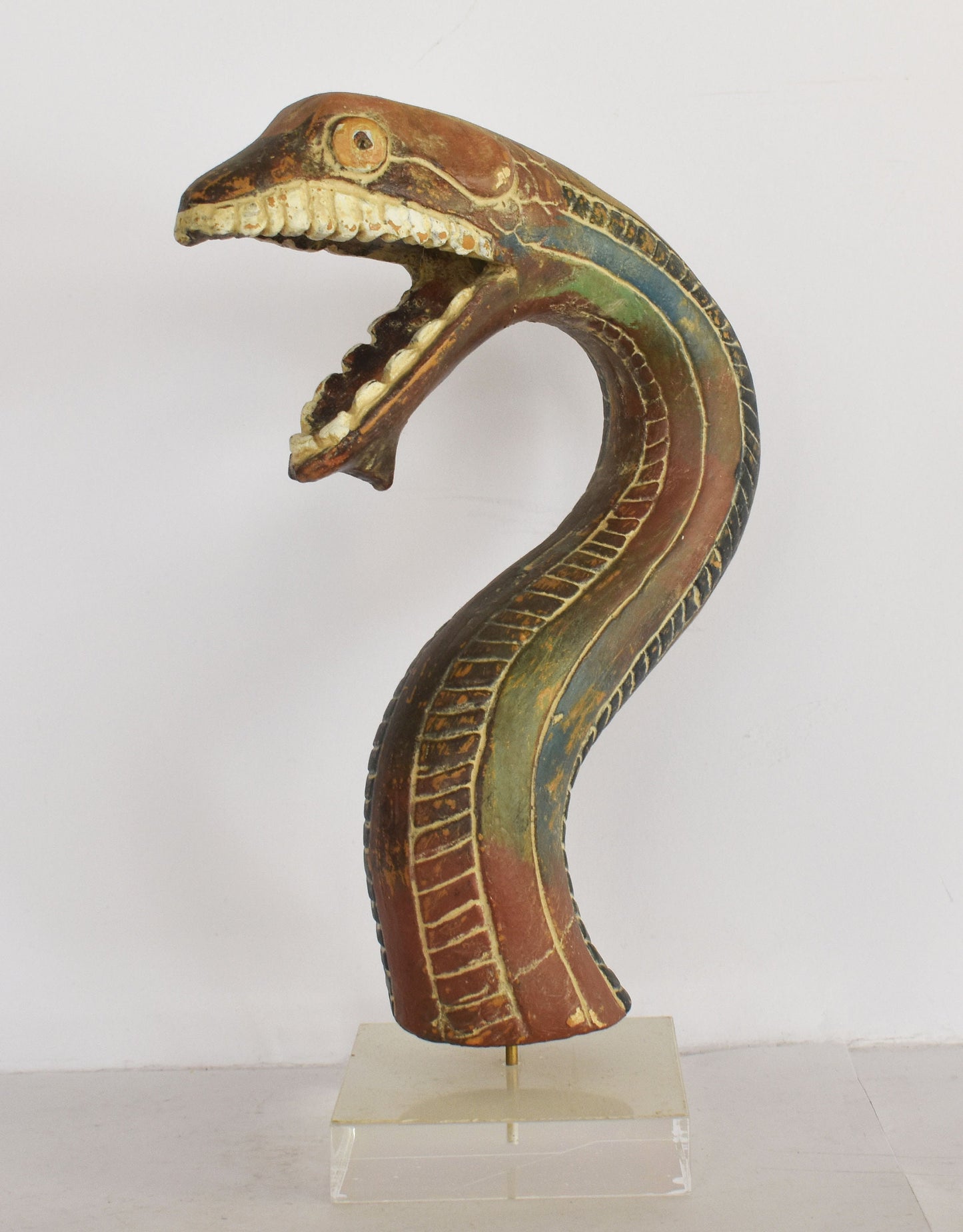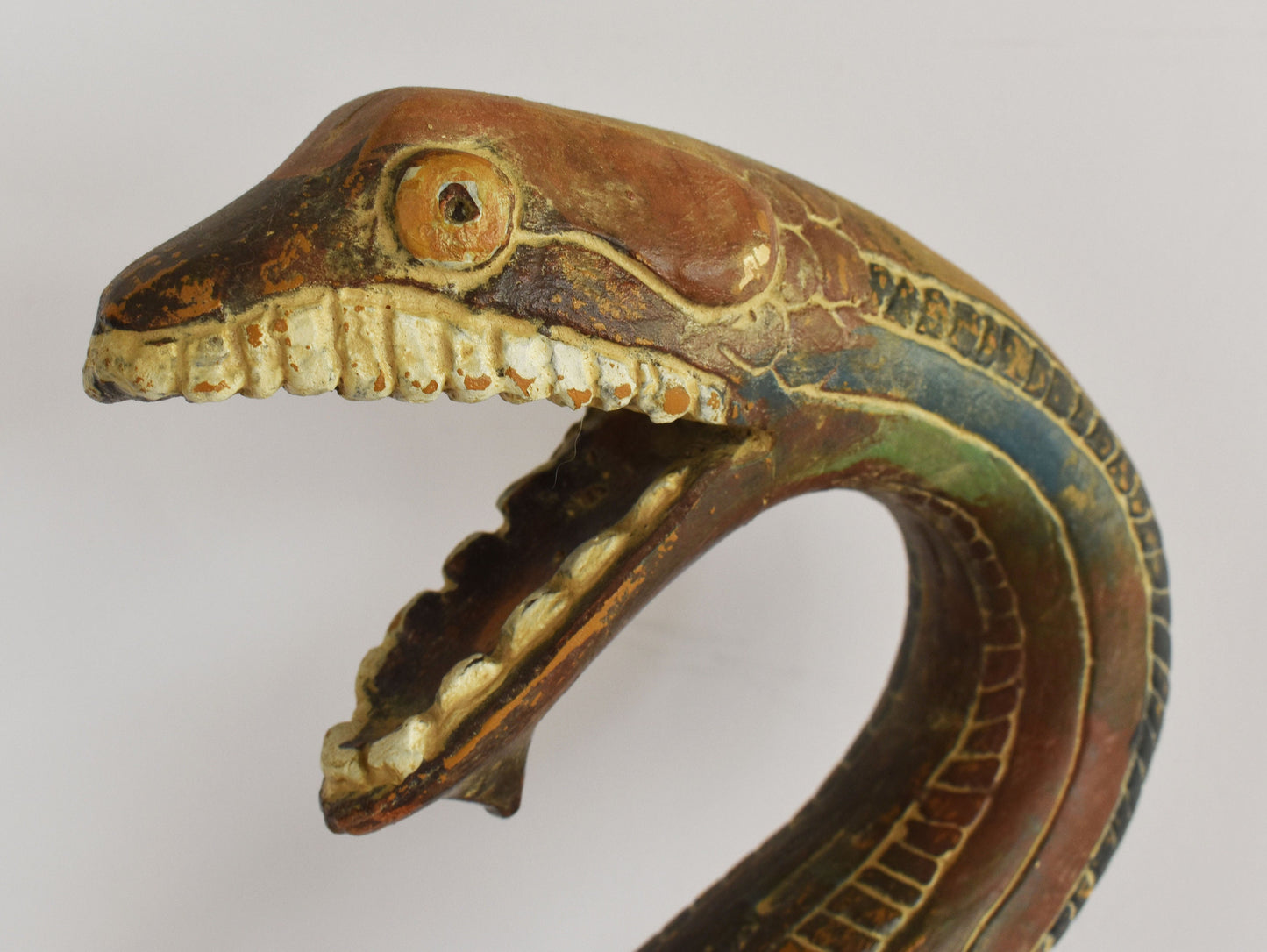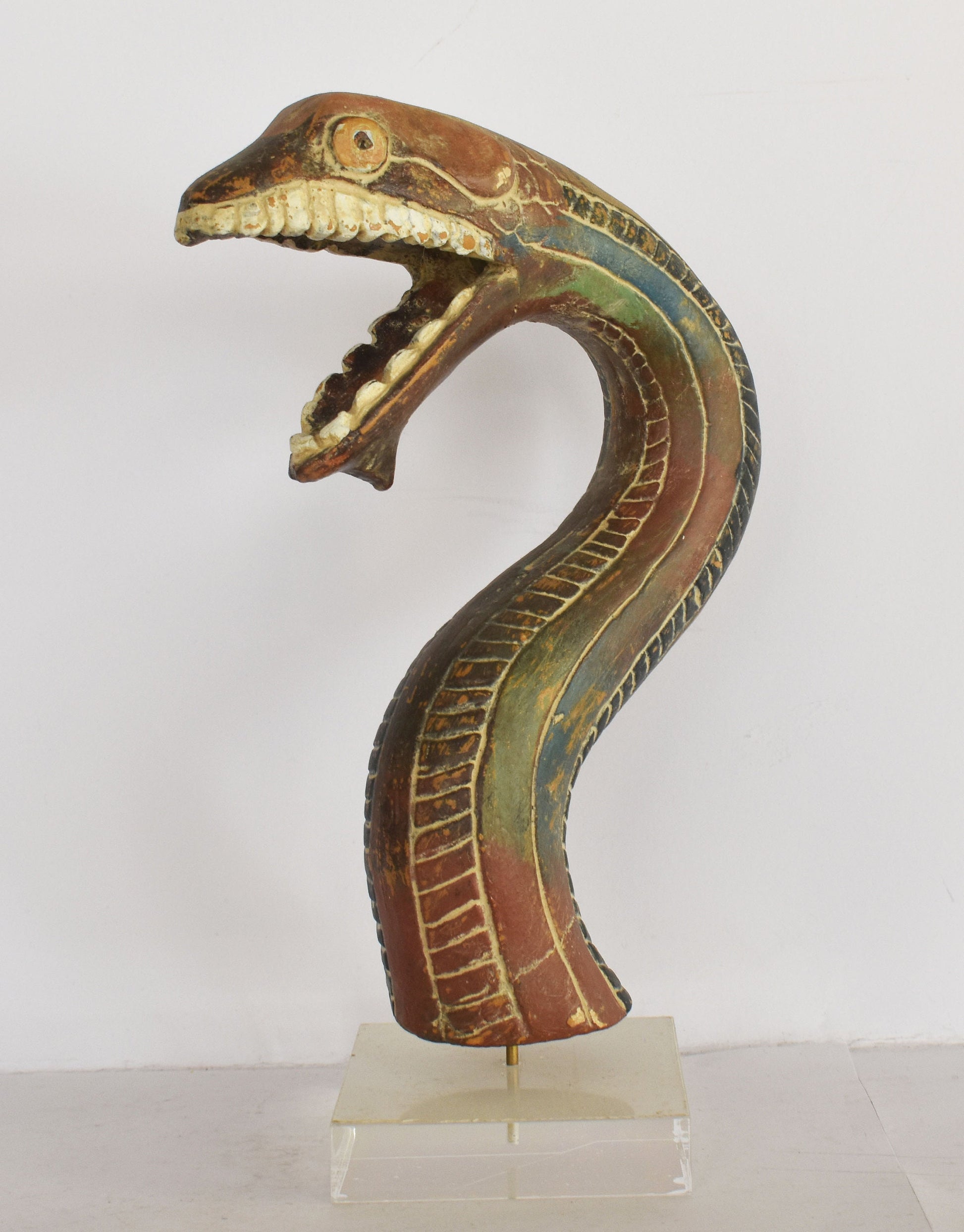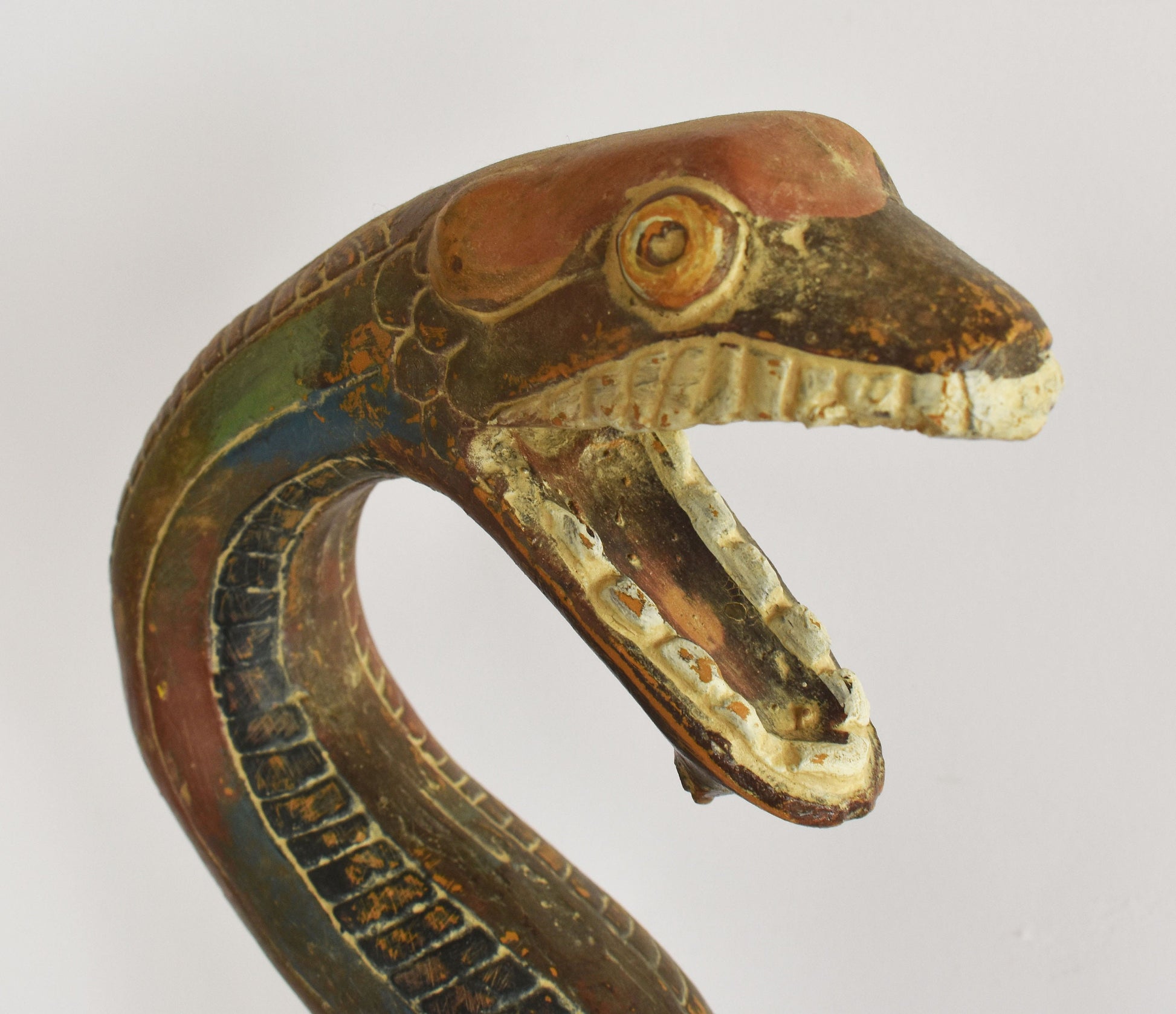Gallery Demeter
Greek Polychrome Head of a Serpent - 6th Century BC.- Athens - Acropolis Museum - Reproduction- Plexiglass Base - Ceramic Artifact
Greek Polychrome Head of a Serpent - 6th Century BC.- Athens - Acropolis Museum - Reproduction- Plexiglass Base - Ceramic Artifact
Regular price
€89,90 EUR
Regular price
Sale price
€89,90 EUR
Unit price
per
Tax included.
Shipping calculated at checkout.
Couldn't load pickup availability
Item Specifics
Details:
Condition: New, Handmade in Greece.
Height: 22 cm - 8,7 inches
Width: 14 cm - 5,5 inches
Length: 17 cm - 2,8 inches
Weight: 630 g
The sacred snake of Athens is an interesting topic of ancient Greece. The idea that a snake lived in the temple of Athena in Athens, and acted as a guard of the acropolis, apparently was prevalent before the Persians ravaged the city in 480 BCE, during the Greco-Persian Wars. The snake, interestingly enough, had a sweet tooth—it was regularly given offerings of honey-cakes. According to The Histories of Herodotus (c. 490-425/420 BCE), this snake influenced many Athenians to abandon their city before the Persians arrived. The majority of the city decided to flee and fight another day after the priests announced that the sacred snake was no longer eating the honey-cake offerings. They interpreted this to mean that Athena had forsaken the city, and had taken the snake with her from the acropolis when she left. When the Greco-Persian Wars were over and the citizens of Athens began to rebuild their acropolis, the sacred snake was said to have made a reappearance and resumed its role as a protector of the city. It supposedly lived in the Erechtheion (or Erechtheum), a temple built between 421-405 BCE, where it continued to eat offerings of honey-cakes.
The identity of the snake is a tricky subject. It was definitely connected to Athena, and, according to myth, may have at one point in time been considered a human demigod. A popular theory is that the snake was connected to the ancient mythical king of Athens, Erechtheus. This king, supposedly raised by Athena, eventually achieved divinity and was worshiped beside the patron goddess of Athens in the acropolis. In an elaboration of this story, the sacred snake of Athens was sometimes seen to be a transformed version of Erechtheus. Other interpretations were that the snake was an incarnation of Erechtheus, or that the snake was a child of the deified king. Nevertheless, in the end, all we really know about Athens’ sacred snake is that it supposedly lived in the acropolis, had a fondness for honey-cakes, and was connected in some way to Athena and Erechtheus.









